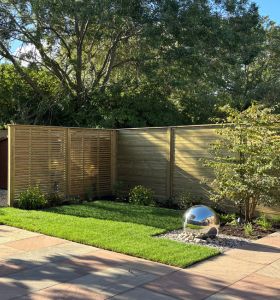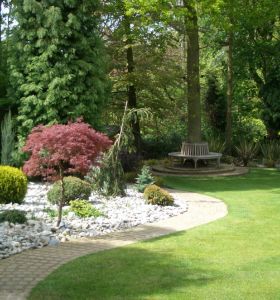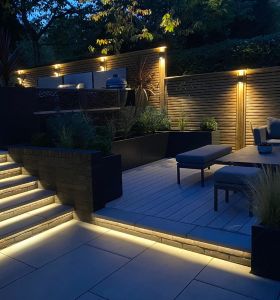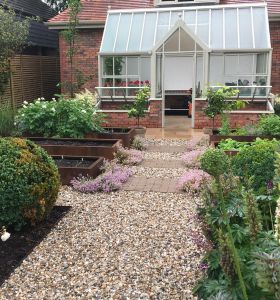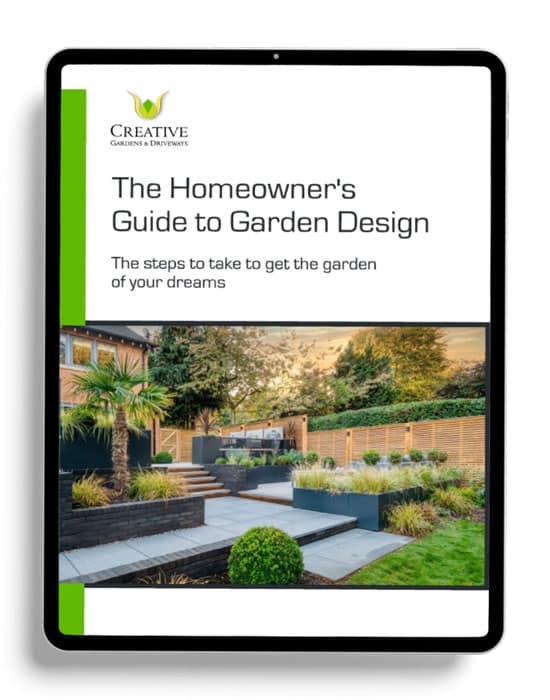Wildlife-Friendly Garden Design To Welcome Nature into Your Landscape
Creating a wildlife-friendly garden is a great way to spend your summer and encourage the whole family to get outdoors. Not only is spending time in nature good for your health and wellbeing, but it can also help you reach your sustainable goals for the season with clever design tips.
Wildlife-friendly gardens have specifically been designed to attract and support local insects, animals and pollinators. They can be incredibly attractive environments that come alive with the seasons and play a vital role in the ecosystem.
At Creative Gardens & Driveways, we believe in creating beautiful outdoor spaces that don’t just look good, but do good for the environment too. As we approach the warmer seasons of the year, we want to encourage our clients to take advantage of the amazing Cheshire surroundings and create wildlife-friendly gardens that bring beauty to everyday life.
In this post, we are sharing some of the best ways you can incorporate wildlife-friendly garden design to create an outdoor space that is attractive to all living creatures.
Wildlife-Friendly Garden Design Tips: Features To Incorporate
There are various ways you can incorporate wildlife-friendly garden design into your landscape this summer, no matter the size or shape of your outdoor space. Adding elements of native flowers, water features, or other organic materials can attract a range of wildlife creatures to make your outdoor space come alive with beauty, such as:
Wildflower Areas For Insects And Birds
A key part of wildlife-friendly garden design is native and wild flowers. Wildflowers can offer beautiful displays and innovative visual appeal to your garden, while also working with the local ecosystem. These plants organically thrive in the region’s climate and conditions, making them ideal for low-maintenance gardens while also being appealing to local wildlife.
Even the smallest gardens can include this element of wildlife-friendly garden design by allowing a portion of their lawn to grow freely. Use the lawn areas to plant wildflowers such as cornflowers, bird’s foot trefoil, and red campion, all of which are great for bees, butterflies and hoverflies.
Organic Pond And Water Features
A small pond or water feature is a great way to incorporate wildlife-friendly garden design, while also creating a calming environment. Whether you opt for a traditional pond or a contemporary waterbowl, incorporating water into the garden can attract a range of wildlife, including frogs, newts and dragonflies.
Water features can also be a great feature for bird lovers, as they provide drinking water to our feathered friends. This is especially vital during the hot summer days and is certain to attract a range of creatures to your landscape.
While you may be tempted to add fish to your pond for additional appeal, this is not ideal for wildlife-friendly garden design, as they will eat the larvae and insects you want to attract. Instead, design your pond to include stepping stones and a shallow exit for small animals so they can safely access the water when needed.
Deadwood And Log Piles For Bugs
One of the easiest tips for wildlife-friendly garden design is to create woodpiles to attract insects and bugs. Woodpiles can be made from fresh logs or old organic wood you have available, which will then be placed in shady corners of the garden. These areas can be as high or small as your desire, but make sure they are secure to avoid injury.
Wood piles should be created in shady corners to create a cool, suitable atmosphere for bugs, fungi and hedgehogs. As the wood decomposes over time, it will produce nutrients which can encourage fungi growth as well as support biodiversity across your garden.
This can be a great way to make your garden more wildlife-friendly, but it needs to be carefully considered. Log piles and decomposing wood may not be suitable for those with pets, as the developing fungi can be toxic, and should be kept clear of children to avoid injury.
Nest Boxes To Create Wildlife Habitats
A lot of local creatures are dealing with habitat loss as the region becomes more urbanised. As forests and green spaces are reduced to make way for homes, businesses and apartment blocks, creatures such as birds, bats and insects are struggling to find safe spaces to rest.
Even the smallest gardens can become wildlife-friendly by incorporating nest boxes or insect hotels in any available space. Insect hotels, made from organic materials, can be a great activity for children and a way to encourage an interest in conservation from an early age.
Likewise, installing bird boxes and small shelters throughout the garden will encourage a range of wildlife throughout the year. To ensure your nests are as appealing as possible, place them in shaded, quiet spots. Keep insect hotels and bird boxes out of direct sunlight or wind-exposed areas to ensure they remain safe and appealing.
Hedges And Natural Borders
Privacy is important for family gardens and contemporary outdoor spaces, and there is a way to make it suitable for all living creatures. By either replacing or reinforcing fences with hedges, shrubs, and trees, you can create a more secluded environment while also attracting wildlife.
Native hedging such as hawthorn, blackthorn, and hazel can be used to offer additional privacy to the garden while also providing shelter, food, and nesting materials to birds and small mammals. Used in both the front and back gardens, hedging is a natural screening solution that offers structure and year-round appeal to wildlife.
Planting For Pollinators: Best Flowers For Wildlife-Friendly Garden Design
Pollinators are essential for a healthy environment and play a vital role in local ecosystems.
Bugs such as bees, wasps, butterflies, moths and hoverflies pollinate all kinds of plants and wildflowers, including food crops, to ensure healthy growth and reproduction. Without these natural support systems, we would not experience such healthy crops or seasonal growth, which is why they should be supported as much as possible.
The plants and flowers you add to your garden can make it more wildlife-friendly and offer support to the essential cycle of pollination. These plants can make beautiful displays in your landscape, with seasonal colour and scents to ensure your outdoor space is both attractive and healthy throughout the year. The best plants for pollinators include:
- Early Bloomers: Crocus, snowdrops, and hellebores
- Seasonal and Evergreen Blooms: Lavender, echinacea, and foxgloves
- Late Bloomers: Sedum, ivy, and Michaelmas daisies
By incorporating a combination of these wildlife-friendly plants, you can ensure your garden is colourful and appealing all year round while also supporting our essential ecosystem.
To create such a wildlife-friendly garden design, avoid sterile hybrids, such as modern petunia cultivars and double blooms, such as heavily ruffled hybrid roses, as these do not produce enough nectar.
Conclusion
Creating a wildlife-friendly garden design can be an incredibly rewarding experience and a great way to encourage the whole family to get outdoors. Supporting wildlife allows you to play an active role in environmental conservation and make better use of your outdoor space.
Wildlife-friendly garden design allows you to be creative and sustainable, creating attractive environments that do great things for the ecosystem. By incorporating native plants and wildflowers, pollinator favourites, water features and organic materials, your landscape can become a hub of beauty.
Attract everything from the smallest bug to endangered hedgehogs and birds by incorporating these wildlife-friendly garden design tips.
Contact Us Today
If you would like to learn more about sustainable gardening or want to unleash the potential of your outdoor space, Creative Gardens & Driveways is here to help. With our professional services, we can create your ideal outdoor space. Contact the team today to learn more or request a quote.

